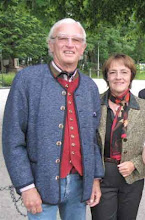A review for Peacehawks of Sandpaper: A Story of Africa, by Angela Mackay. 2013.
- by Jamie Arbuckle
Angela Mackay has written a simply
marvelous novel of Africa. It is perhaps
the best book I’ve read this year, and
it takes us truly into an Africa we think we know, or at least we think we know
of: the post-colonial legacy of exploitation and neglect, and the post-independence period of corruption and
incompetence have combined to produce a dystopia characterized by poverty, ignorance
and protracted internal strife. Life is
nasty, brutish and short, and we’ve heard it all before – we might even have
been there. But when you have laid this
book down, you will at last know how little you knew.
Although the setting of this book may seem familiar, the
cast is not, because they are all Africans – we
usually call them “local nationals”, don’t we? In fact, of 59 characters
listed in the Dramatis Personae, only
four are not “locals.”
Above all, this (imaginary) African country is not a
dystopia at all, and this is what may come as a surprise to many readers: here is a society as complex, as difficult to stereotype as our own – indeed, the
major surprise here will be to see, to experience, how like us these people
really are.
We tend, when we consider the peoples of
these “emerging nations” at all, to
think of them as unfortunates, somehow
diminished by their misfortunes. Our
incredible great fortune in not having been born into a life of poverty,
famine, neglect, violence, has made us
somehow superior to those less fortunate – a sort of geographic and historic inheritance.
After reading this book, it will be difficult if not impossible for us ever to
think that way again. The Africans we meet on Angela’s pages will probably astonish us for their self-awareness,
their sense of their own responsibilities for their society, their culture,
their affairs. Read especially carefully
the chapter “Meeting of the House of Chiefs” (pp 129-139): an orderly and
sensible debate, highly effective
negotiating techniques, a leader who is an effective mediator, a wise and
mutually beneficial outcome to a complex, multi-issue process. They do not need
the foreign legions of aid workers, peacekeepers, NGOs – their fate is theirs,
and for better or worse, it is in their hands.
We may have indeed been there, done that – how could we have known so
little?
I have mentioned that the cast is large,
and the unfamiliar names make it hard
for us to keep track. A tip: there are nine in “Joseph’s family”, and that family is nearly always at the center
of the book. Take the time to learn them; every thing radiates out from or
impacts them; follow them and you will follow the action.
“Write what you know” is a proven method,
and Angela’s deep knowledge of and her love for Africa are among the strongest
points of this highly readable book. Just open to any page, as I did, and you
are there in Angela’s flowing descriptions:
A file of women walked home carrying water on their heads, the evening
light picking out the enameled pots that bounced above the maize stalks; young
boys hurried home with bundles of firewood strapped to the seats of wobbling
bicycles. Cattle plodded across the dried river bed to water holes in the sand.
The mossy smell of night fell on him as an ice-clear moon and the
flurry of the Milky Way floated across the southern sky. Sometimes, far in the distance, he saw the
one-eyed blaze of the night train carving across the land. (page 41)
Fortunately for us, Angela goes beyond
writing just what she knows, and writes authentically and convincingly of
things she cannot have “known”. How to inspect a shipment of used weapons?
Angela tells us in detail just how it is done:
“Swinging the weapons round, with his eye to the muzzle (he) could get a
reflection of light from his thumbnail in the space where the bolt would fit (page 78)”.
Just so, Ms. Mackay.
Later, we are
taken inside the battle procedures and the preparations for an ambush (“Rain
Fight”, pages 195-99), and it is as if straight out of Canadian Army Manual of
Training (CAMT) 7-45: Infantry Section Leading and
Platoon Tactics
(1954), my bible for many years:
The killing group was in position at the
ambush point, augmented stealthily during the night by the tracking teams ….
In an L-shaped formation along the river bed, machine guns dominated the line
of the advance … while most of the force lined the long arm of the river, row
upon row, ready to roll over, pop up and fire at those trapped in the
valley. It was a classic approach …
I could have sworn that rain was, despite my helmet and
cape, trickling down my back, as I lay there with them in the mud, waiting …
A co-reader of Sandpaper has noted, especially in the House of the Chiefs, the typical male dominance. This is of course true, but one of the strengths of this book is that it is authentically descriptive, and avoids tiresome prescriptions. Moreover, there are 14 female characters here and at least three play vital roles in the events of the book: Nani (who works for a local refugee NGO), Fran (a Canadian widow and restauranteur) and Magda (who in an incredible display of courage and resourcefulness, busts Joseph out of a prison in which he is about to die). Women matter greatly in this society.
Whatever Africa may have been for you, it will probably
never be quite the same after you’ve read this
book. And, if you care at all, read it you must.

